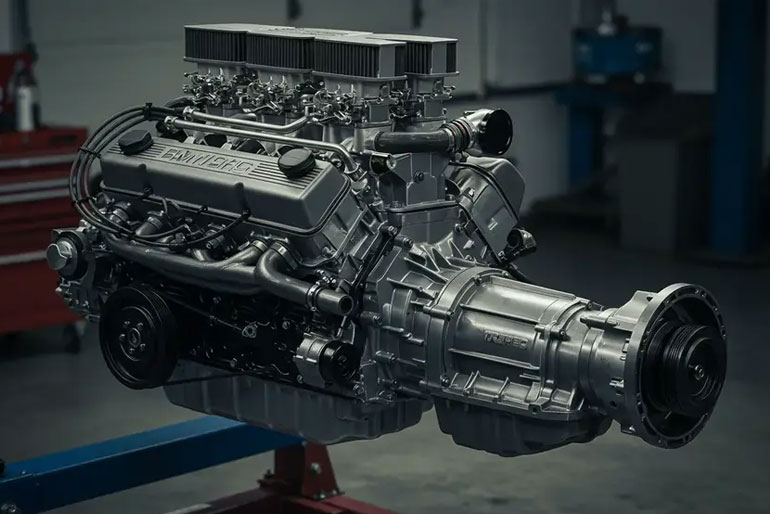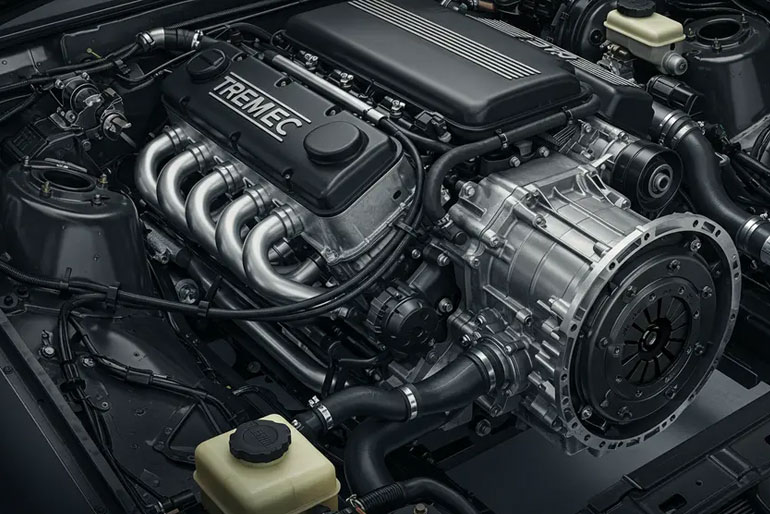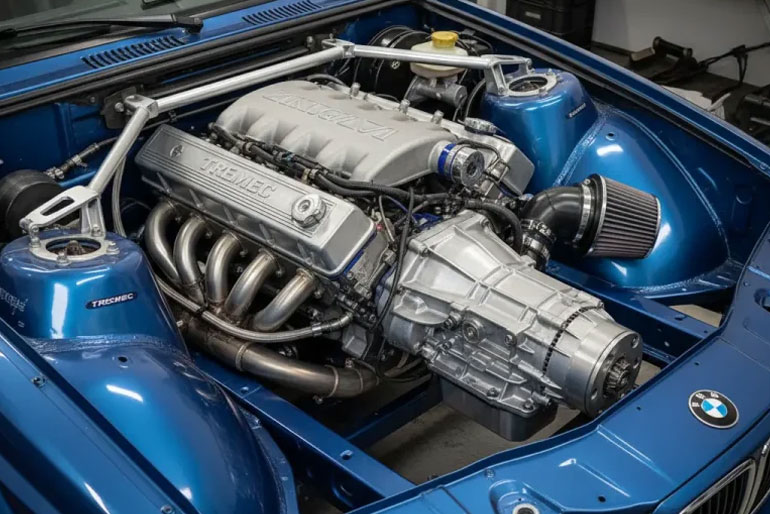If you’re thinking about putting a Tremec T-56 manual transmission behind a BMW M70 V12 engine, you’re diving into a bold and rare project. It’s not easy, but with the right planning, it can create a car that’s both thrilling to drive and deeply unique. I’ll walk you through what you’ll face, why people try this, and things to watch out for — in simple terms.
What Is the M70 V12?
The BMW M70 is a 5.0-liter V12 engine produced between the late 1980s and mid-1990s. It uses a 60° layout, aluminum construction, and a smooth power delivery. In its original setup, BMW paired it to an automatic transmission. The idea of a T-56 swap is to give such a luxury engine the control and engagement of a manual gearbox.
Why Choose the Tremec T-56?
The Tremec T-56 is a six-speed manual transmission that’s been used in many performance cars over the years. It’s known for being strong, reliable, and relatively well-supported in the aftermarket. It can handle a good amount of torque — more than enough to deal with what an M70 produces.
By pairing the M70 with a T-56, you gain:
- Better driver control — you choose each gear, so shifts feel personal.
- Stronger durability — the T-56 is built to take abuse.
- Unique appeal — manual V12 BMWs are extremely rare.

How the Swap Works (Step by Step)
This is a high-effort project, so here’s a rough outline of what you’ll need to do. Think of it as a map of what lies ahead.
| Step | What You Do | Why It’s Needed |
|---|---|---|
| Remove the stock automatic | Take out the factory gearbox and torque converter | It no longer fits with the manual setup |
| Adapter or custom bellhousing | A part that links the M70’s output to the T-56 | The bolt patterns and spacing don’t match by default |
| Flywheel, clutch, pressure plate | Choose parts that match the torque output | You want something that can hold up under power |
| Mounting & crossmember | Make or adapt support brackets | To physically hold the T-56 in place |
| Driveshaft modifications | So the car knows all states, and it works safely | The new transmission shifts things, so alignment changes |
| Clutch hydraulics and linkage | Master cylinder, slave cylinder, pushrod, cables | To operate the clutch from the driver’s pedal |
| Wiring & sensors | Reverse light switch, neutral safety, clutch sensor, ECU changes | Adjust the software or use a standalone system |
| ECU tuning or control | To sync the engine and transmission behavior | Check shift effort, gear engagement, and leaks |
| Testing, alignment, and tuning | Check shift effort, gear engagement, leaks | Final refining to make it reliable |
Because you’re doing a swap with parts that never “came together” from the factory, you’ll spend time planning, fabricating, and testing.
Challenges & Things to Watch Out For
- Fabrication skill: You’ll probably weld, machine, or fabricate parts.
- Clearance issues: The T-56 is a different size and shape than the original automatic box, so you might need to adjust the floor tunnel or mounts.
- Electronics and control: The M70 has complex dual systems (one per bank) and modern throttle controls. Getting everything to communicate smoothly is tricky.
- Heat and cooling: The V12 generates a lot of heat in tight spaces — watch how you route oil and coolant lines.
- Cost: Parts like bellhousings, driveshaft work, and labor add up fast. Some estimates for parts + labor range from $6,000 to $10,000+ (USD), depending on your region and how much you do yourself.
- Reliability: A sloppy install means you might get leaks, misalignments, or driveline vibration — all things you want to avoid on a V12.
Benefits You Get
- Driver engagement: Shifting a manual gearbox gives you more feel in how the car behaves.
- Stronger gear support: The T-56 is known for handling torque, reducing the chance of transmission failures from misuse.
- Uniqueness: You’ll have a V12 BMW manual car — something very few have done.
- Upgradeable: Because the T-56 is common in performance circles, you can find stronger clutches, short shifters, etc.
Real-World Examples & Notes
- Some builders have swapped T-56 into V12 cars to combine luxury with race feel.
- On BMW forums, some ask about making manual setups for M70, often considering Tremec options.
- One project placed a BMW V12 (M70) in a custom car and used an adapter to bolt it to a manual transmission.
These show you’re not alone — but also that each build tends to be very custom and unique.

Tips to Make It Smoother
- Start with a good condition engine and transmission — parts with wear will magnify problems.
- Get or design a detailed adapter for the bellhousing rather than trying to jury-rig things on the fly.
- Use a standalone or reprogrammable ECU to manage signals instead of trying to force stock systems.
- Plan all clearances early — tunnel room, shift lever path, exhaust, etc.
- Test in stages — mount and align, then hydraulics, then wiring, then drive.
FAQs
Q: Can the Tremec T-56 handle the power from the M70?
Yes — the T-56 in many versions handles moderate to high torque loads, which in most cases will cover what the M70 produces.
Q: Did the M70 ever come with a manual from the factory?
No, the M70 was only offered with automatic transmissions in stock BMWs.
Q: Is this swap beginner-friendly?
No. This is a challenging, fabrication-heavy, and detail-oriented project. Without experience in engine work, wiring, and machining, many steps can result in mistakes.
Q: How much might it cost overall?
It depends on parts availability and labor. A rough part + tooling estimate is $6,000 to $8,000, and full professional work can reach $10,000 or more.
Q: Will the car be drivable on a daily basis?
If done carefully, yes. But it depends on how good the installation is, cooling, clutch effort, and how well you integrate systems. Poor wiring or cooling can make it problematic.
Sources:
https://en.wikipedia.org/wiki/BMW_M70
https://carsthrive.com/m70-with-tremec-t56-bmw/
https://www.bmwblog.com/2023/06/29/bmw-m70-v12-engine/
https://reganmotors.com/m70-with-tremec-t56-bmw/
https://www.motorcraz.com/m70-with-tremec-t-56-bmw/







